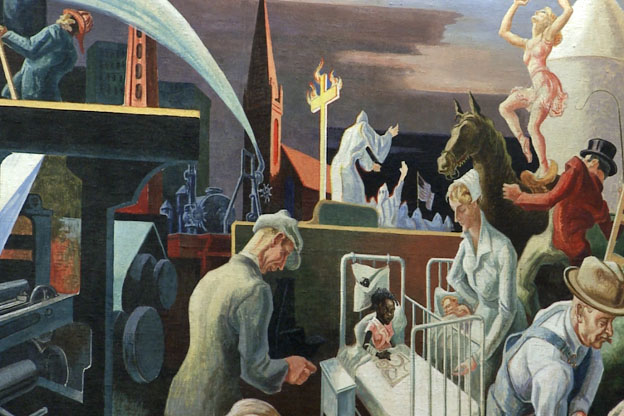
There Are No Artists or Authors: Art, Meaning, and Sensitivity
 “In ‘The Death of the Author’, Barthes argues that writing destroys every voice and point of origin. This is because it occurs within a functional process which is the practice of signification itself…A writer, therefore, does not have a special genius expressed in the text, but rather, is a kind of craftsman who is skilled in using a particular code. All writers are like copywriters or scribes…By refusing the ‘author’ (in the sense of a great writer expressing an inner brilliance), one refuses to assign an ultimate meaning to the text, and hence, one refuses to fix its meaning.” –Andrew Robinson
“In ‘The Death of the Author’, Barthes argues that writing destroys every voice and point of origin. This is because it occurs within a functional process which is the practice of signification itself…A writer, therefore, does not have a special genius expressed in the text, but rather, is a kind of craftsman who is skilled in using a particular code. All writers are like copywriters or scribes…By refusing the ‘author’ (in the sense of a great writer expressing an inner brilliance), one refuses to assign an ultimate meaning to the text, and hence, one refuses to fix its meaning.” –Andrew Robinson
I recently read an article in Artnet News about students at Indiana University rallying to remove a Thomas Hart Benton mural that depicts a KKK rally. The argument being put out there on the mural’s behalf is that Benton unapologetically depicted the shameful (as well as the proud) moments in Indiana’s past, and was in fact condemning the KKK by making reference to a 1928 article that helped uncover the KKK’s ties to the government.
This is all well and good, but I still think we need to be omnisensitive here. In my opinion, there is zero harm that can come from warning people before entering the room that there is a mural inside casually depicting a KKK rally. Providing people with an opportunity to understand the art a bit more deeply before entering the room (in whichever form this takes; e.g. a summation/explanation of the artist’s intention outside the class perhaps) is only a good thing. Because, to be honest, unless there is more to the painting than what is shown in the article, it is not immediately apparent to me that this painting by Hart is condemning anything, it merely looks like the KKK is holding a rally as usual.
That said, another thing to consider here is that the artist’s intention only makes up a very small part of what the artwork actually means.
As Roland Barthes says, a writer is merely a scribe. The same is true for visual art, in my opinion. An artist may have an intention, good, bad, or somewhere in between (although in my experience as someone who creates art, intentions change over the course of making a work, they’re not static), but that intention has little to nothing to do with how a work is received by a viewer. We all have our own histories, our own experiences, our own traumas, and ways of perceiving that we bring to a work of art, so even if a person knows the artist’s intent, it’s just another piece of interesting information that gets mixed in with everything else; the artist’s intention is about as interesting as the kind of paint she used. More than perhaps anything else, the viewer sees them-self in a work of art. So, again, I think we should attempt to be sensitive here, and realize that not everyone is the same, or at the same place, intellectually, emotionally, developmentally, experientially, etc…. And, hey, if there is a mural with a KKK rally being casually depicted in it (where the KKK is not in handcuffs) we may want to anticipate (or even expect) that someone will be upset by it.
[…] These are topics that interest me and ones in which I’ve blogged a bit about before (here, here, […]